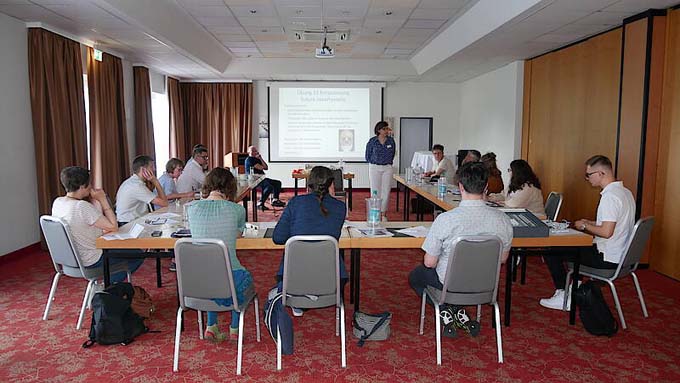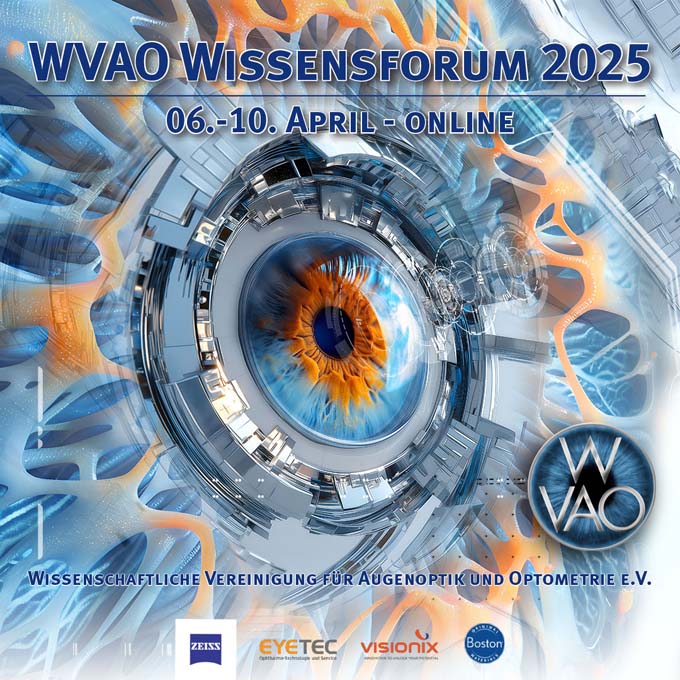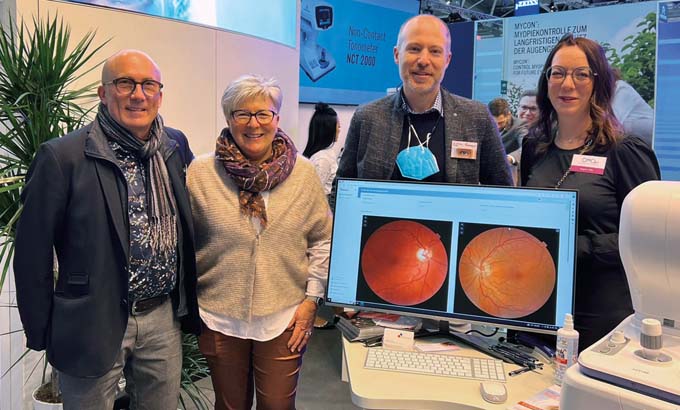The Swiss professional association for opticians and optometrists adapts to the times
This year's SBAO symposium took place on March 16 and 17 in the inspiring atmosphere of the Paul Klee Center.
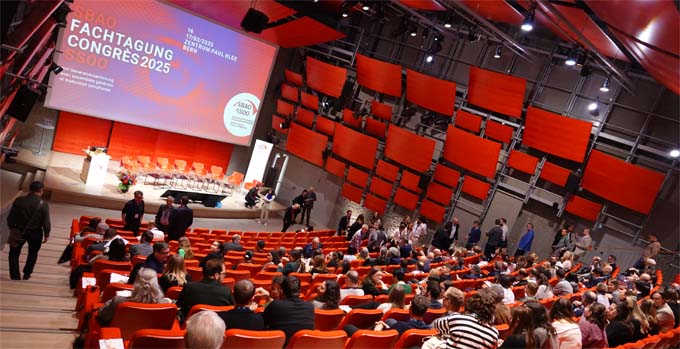
This year's conference offered a varied program with top-class presentations in French, English and German on lenses, screening methods and the latest research findings. The practical case studies from experts in the fields of contact lens fitting and binocular vision were particularly valuable. An industry panel rounded off the event with a perspective on the future.
Will eye operations be performed by robots in the future?
The criteria for the optimal timing of cataract surgery are not clearly defined. In his presentation, Martin Kündig emphasized that patients accept the effects of treatment better if the operation is not performed too early.
The well-being of the patient is more important than the doctor's ego when it comes to interventions. In her presentation on glaucoma treatment, Dr. Ségolèene Roemer expressed her conviction that successful treatment is based on good interdisciplinary cooperation. She particularly emphasized the cooperation between ophthalmologists and optometrists.
Prof. Dr. Matthias Becker, founder of Ophthorobotics AG, has researched the possibilities of how robots could help with eye operations together with ETH Zurich. Today, the surgeons themselves still have full control over the operations. Only telerobotics is already being used, for example in Lasik. For operations on the front of the eye, manual surgical methods are so well developed that they are still preferred to robotics. One of the reasons for this is that today's robots are still too rough for the delicate eye. The only interesting exception here would be injection robotics. Automated injection systems could make it possible to treat several patients at the same time. A significant advantage of robots is their absolute stability of movement. As even the most experienced surgeons have natural hand tremors, special auxiliary instruments have already been developed to compensate for these tremors and ensure complete immobility. During the operation, the surgeon controls the robotic arm - the right hand for the right side, the left hand for the left side, while the forceps are operated by foot control. This innovative technique enables doctors to treat areas of the eye that are difficult to access and to change their own position while the surgical tool remains precise and stable in the eye.
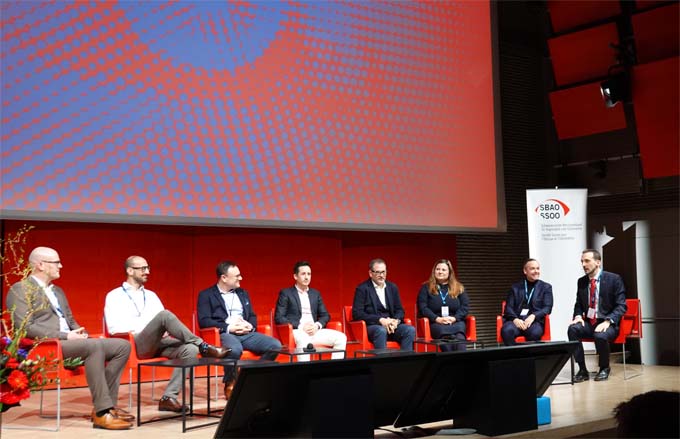
When asked about their dreams for the future, the OSO industry partners present expressed their ideas on stage. At the forefront were digital AI-controlled spectacle lenses and contact lenses as well as a spectacle cleaning and pad changing machine. Present from right to left were Stephan Kettler from Zeiss, Patrica Dallinger from Alcon, Enrico Giarrusso from Optiswiss AG, Mischa Wolf from CooperVision, Yves Bargetzi from Rodenstock, Samuel Schaub from Hoya and Marc von der Burg from Essilor. The panel was chaired by SBAO President Manuel Kovats, far right.
Scleral lens
The Monday morning of the conference was devoted entirely to the scleral lens. In the first lecture, Alex Ziörjen dealt with possible troubleshooting when fitting these large lenses. According to the speaker, a lot depends on the care product. In the case of reddened eyes or intolerances, he would certainly change the storage medium first. If there are problems with the fit, the practitioner will then also change to a freeform lens, which solves many of the fit problems. However, it is important to always bear in mind that visual acuity 1.0 does not always mean that the customer really has 1.0 vision. It is often possible to guess an aperture with a visual acuity in blurred vision.
A few years ago, scleral lens specialist Brian Tompkins rode onto the stage on a Harley Davidson as a speaker at a specialist conference. As a tribute to his follow-up speaker, Philippe Seira took to the stage at the current conference on a scooter. In his presentation, he compared various recipes for lenses and demonstrated the different options for contact lens fitting. His presentation focused on the fight against drop-outs. Verbal and written information is essential in order to provide customers with good information and support. To this end, they have many information leaflets available in their practice. Most of them are developed by them and include explanatory photos and drawings. Optometrists are able to convey the joy of lens wear to people. According to the Vaud native, follow-up check-ups should be in the middle of the village again, just like the church. A follow-up check should cost money, but it should also be used to show professionalism, provide information about new products and ensure good customer loyalty.
Brian Tompkins from the UK calls himself an optometrist entertainer and lives it to the full. For him, all fitters are superheroes and should reflect on their superpowers. Because optometrists and lens fitters can't sense people or read minds, they have to become super detectives. It is important to listen carefully and read between the lines. He also recommends questionnaires and, above all, paying attention to customers' unspoken fears. In their practice, Brian and his Super Optometrist team have introduced a subscription system. He called it the "Netflix system". They run subscriptions for different lenses and needs and they all have everything included. Customers don't have to pay for anything extra. His statement was: embrace your superpower, fly to your clinic and be sparkled. And do it with Sparkle and be happy. Have fun.
Red or blue light for myopia control
Prof. Dr. Dr. Frank Schaeffel, a biophysicist from the University Hospital Tübingen and IOP Basel, has presented important findings on myopia control. His research focuses on the effect of different colored light sources on the development of myopia. It has long been established that being active outdoors can inhibit the development of myopia more than genetic factors. Studies have compared the effects of daylight lamps and natural outdoor light. The best results were achieved with a light intensity of 20,000 lux, whereby it made no difference whether the light was artificial or natural. 20,000 lux corresponds to daylight without direct sunlight. Interestingly, UV therapies, which are successful in some animals, are not effective in humans, as UV light does not reach the retina at all. An experiment with chickens was particularly revealing: despite spending time outside, they developed short-sightedness when given dopamine blockers. This clearly shows that it is not image sharpness alone that is decisive, but that the interaction between dopamine and melanin plays a central role. Research suggests that different colors of light elicit different responses and that a combination of different colors may be necessary to trigger a predictable response in the eye.
The symposium offered a successful mix of science, practical relevance and inspiration - and once again underlined the importance of interdisciplinary exchange in modern ophthalmic optics.
The next OSO conferences are the newly launched congresses in French-speaking Switzerland on May 18 in Alpha Palmiers, Lausanne and in Ticino in Bellinzona on October 12. The OPTX will take place in Baden again this year, on September 21, and for the next spring conference it's "Goodbye and see you next year, at the Zentrum Paul Klee in Bern."






